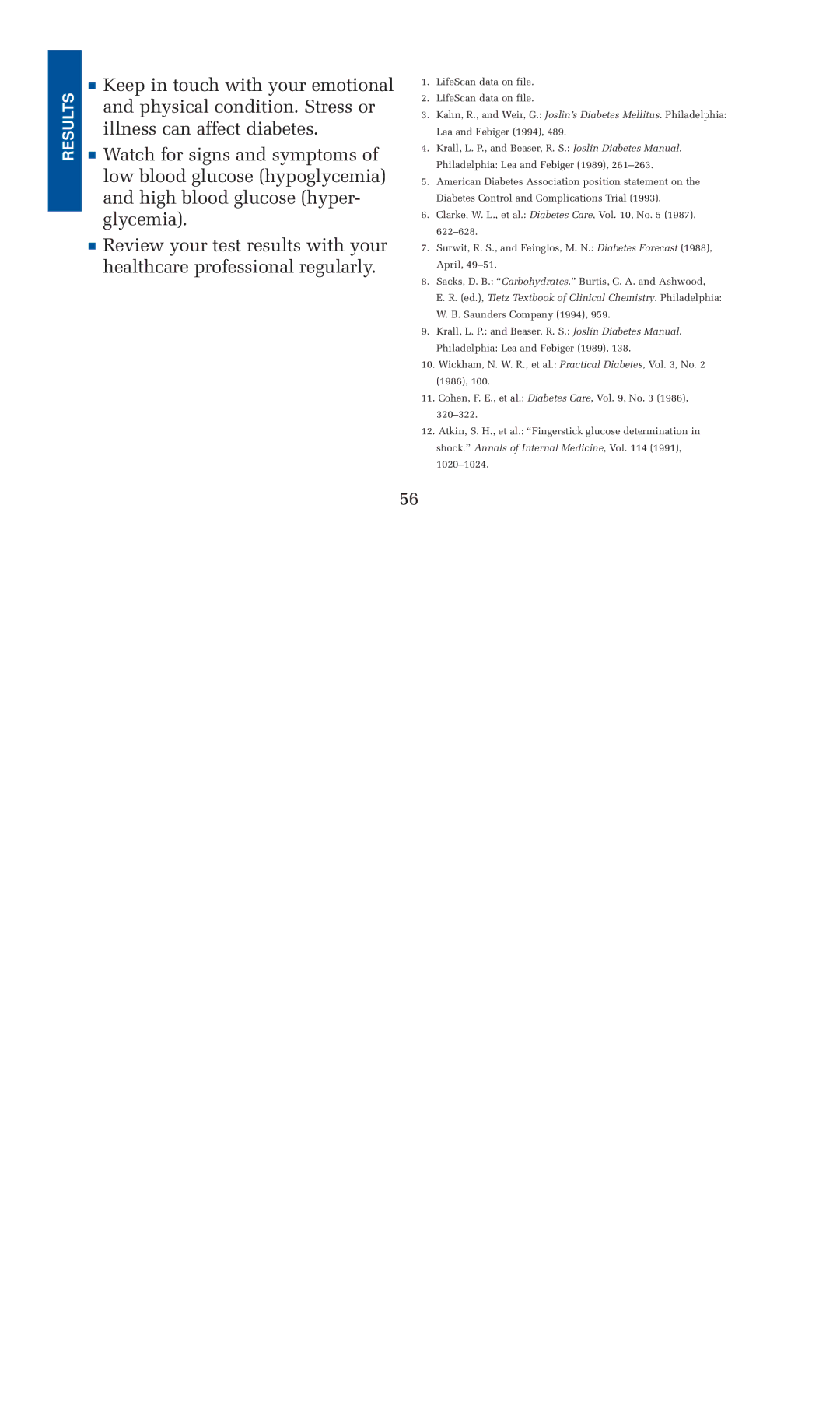
RESULTS
■Keep in touch with your emotional and physical condition. Stress or illness can affect diabetes.
■Watch for signs and symptoms of low blood glucose (hypoglycemia) and high blood glucose (hyper- glycemia).
■Review your test results with your healthcare professional regularly.
1.LifeScan data on file.
2.LifeScan data on file.
3.Kahn, R., and Weir, G.: Joslin’s Diabetes Mellitus. Philadelphia: Lea and Febiger (1994), 489.
4.Krall, L. P., and Beaser, R. S.: Joslin Diabetes Manual.
Philadelphia: Lea and Febiger (1989),
5.American Diabetes Association position statement on the Diabetes Control and Complications Trial (1993).
6.Clarke, W. L., et al.: Diabetes Care, Vol. 10, No. 5 (1987),
7.Surwit, R. S., and Feinglos, M. N.: Diabetes Forecast (1988), April,
8.Sacks, D. B.: “Carbohydrates.” Burtis, C. A. and Ashwood,
E. R. (ed.), Tietz Textbook of Clinical Chemistry. Philadelphia: W. B. Saunders Company (1994), 959.
9.Krall, L. P.: and Beaser, R. S.: Joslin Diabetes Manual.
Philadelphia: Lea and Febiger (1989), 138.
10.Wickham, N. W. R., et al.: Practical Diabetes, Vol. 3, No. 2 (1986), 100.
11.Cohen, F. E., et al.: Diabetes Care, Vol. 9, No. 3 (1986),
12.Atkin, S. H., et al.: “Fingerstick glucose determination in shock.” Annals of Internal Medicine, Vol. 114 (1991),
56
